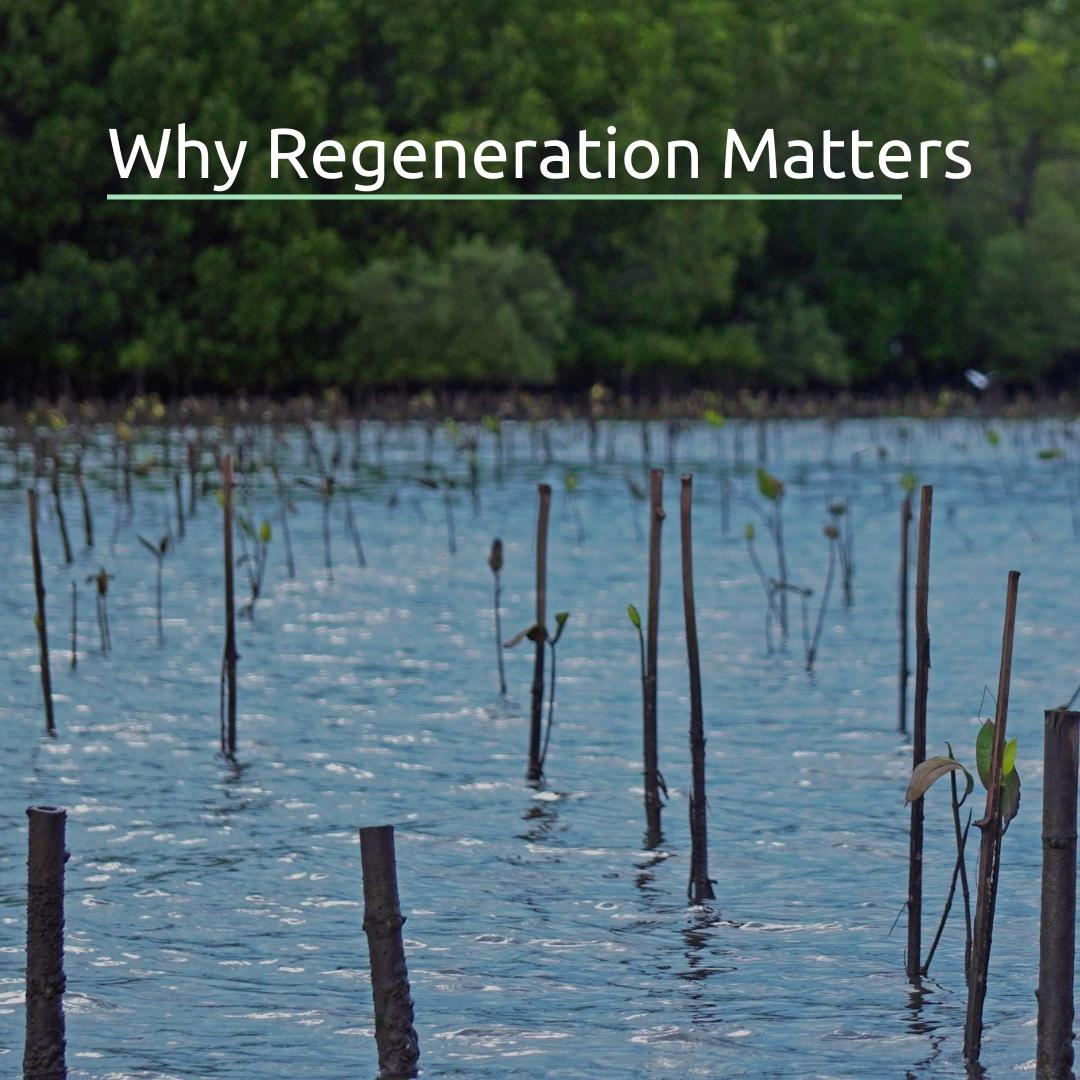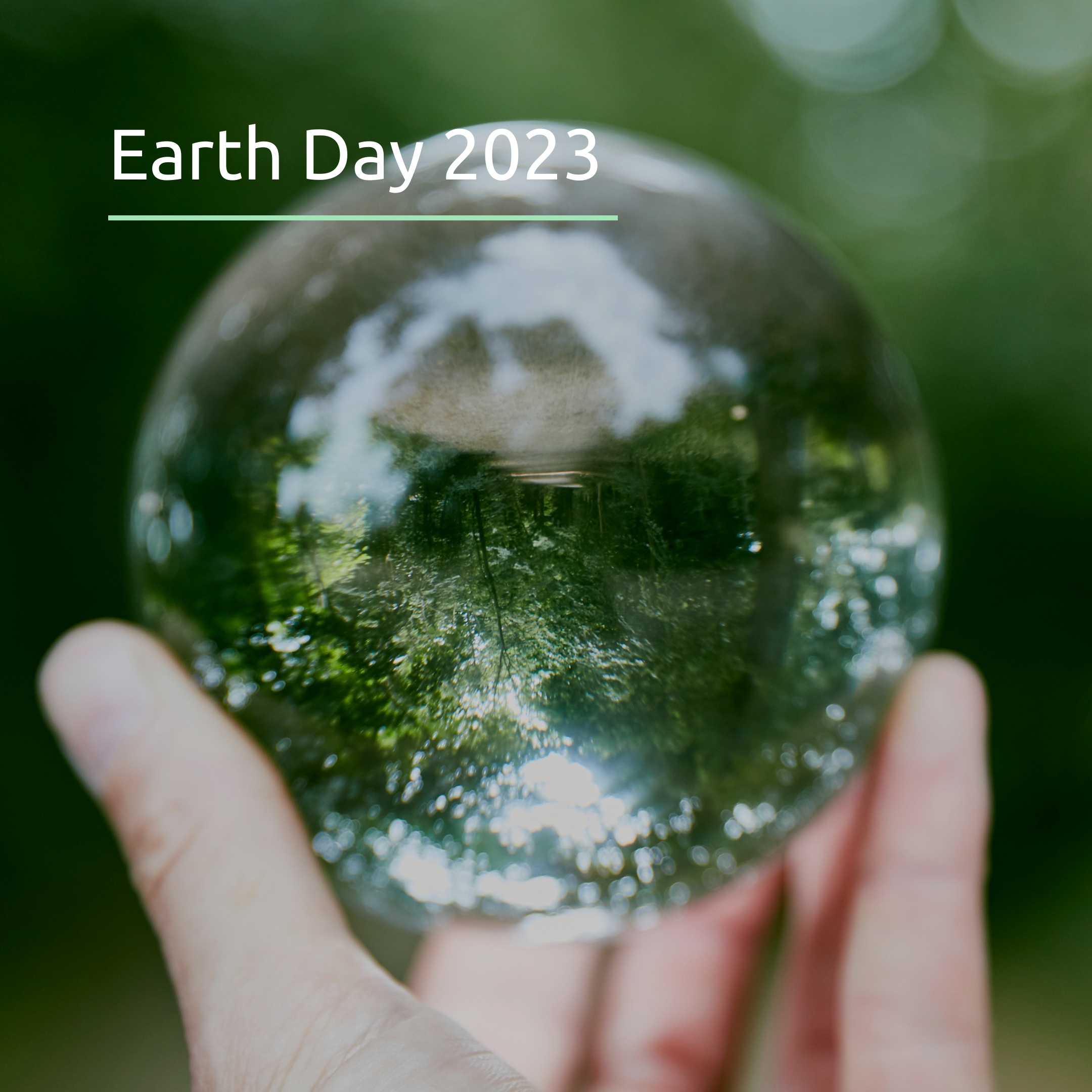In the world of climate tech, the conversation is largely centered around carbon emissions and reducing our carbon footprint. While this is an important issue to address, it's not the only one. Climate change is a symptom of a much larger problem - the extractive and destructive relationship the global economy has with nature. To solve this problem, we need to transform our extractive economic system into a regenerative one. In this blog post, we will explore why regeneration matters and why companies need to focus on not just reducing their footprint but growing their handprint, or positive impact on the environment. We will discuss how a focus on regeneration rather than just reduction can create public value that is not only valuable but also profitable for companies.
Handprint’s approach starts with Regeneration, Rewire and Inspire.
Regeneration
Regeneration is the call for a global effort to restore and preserve our natural environment, and it comprises three critical components: Reserve, Restore, and Rewild. Reserve is the first component, emphasizing the importance of preserving and expanding our natural reserves. The prevalence of protected nature reserves should increase from the current 11% to 30% of the world's land and water surface, which is not only valuable for the natural ecosystems and animals, but also economically sensible. Nature capital is our most valuable reserve stock, and by extracting it relentlessly, we have made a significant fiscal mistake. It is time to regenerate this lost capital, recognizing the rights of indigenous tribes living in reserves and providing space for nature to re-emerge.
The second component of regeneration is Restore, which calls for the active, human-led restoration of degenerated lands and waters. In addition to cleaning up plastic pollution in oceans and halting unsustainable fishing practices, restoring degraded lands and forests is crucial to the health of our planet. A global forestry plan can create enormous wealth for both the planet and businesses that recognize this opportunity. For example, supporting mangrove reforestation in regions like Indonesia and Myanmar can cost around 3,000 USD per hectare, with the potential to sequester up to 1,000 tons of carbon per hectare and provide ecosystem services worth up to 190,000 USD. These investments in restoration have enormous potential to benefit the planet and its inhabitants.
The third component of regeneration is Rewild, which is the reintroduction of keystone species like wolves to restore lost balance in ecosystems. This requires the withdrawal of humans, allowing the wilderness to be the wilderness once again. This approach to conservation is not without controversy, but many experts agree that rewilding is a necessary step towards restoring the health of our planet. It also requires recognizing the rights of indigenous tribes living in protected areas and providing space for nature to re-emerge. By increasing our natural reserves, restoring degraded lands and waters, and reintroducing keystone species, we can work towards a more sustainable future and a healthier planet for all.
Rewire
The Rewire process focuses on investigating a business's wireframes, which are a systematic analysis of a company's activities that create touchpoints with key stakeholders such as customers, employees, and suppliers. Unlike business models, which provide a high-level overview of a company's value creation and capture, wireframes describe the nuts and bolts of a business's practical implementation of activities. While wireframes are more actionable than business models, they are significantly more idiosyncratic and require significant work to codify. Therefore, Handprint recommends that companies focus on key wireframes that drive value or costs, have significant risk implications, or absorb a lot of time from key personnel. By breaking down specific processes into their various components, Handprint helps companies figure out which aspects of the work can be automated, delegated, or outsourced and which should remain within the purview of a specific person. Ultimately, Handprint works with companies to digitally rewire key activities that affect customers and employees and imbue them with positive impact by embedding regeneration in the wire.
Inspire
The third and final step, Inspire, in the Handprint approach is crucial because it provides a clear answer to the question of why companies should embrace regeneration. While protecting biodiversity and the climate is necessary for human survival, the business imperative may not be immediately apparent. However, evidence from around the world shows that customers are increasingly becoming environmentally aware and are looking to consume more consciously. Even B2B companies are being asked to demonstrate their sustainability credentials. By embedding regeneration in key stakeholder touchpoints, companies can create a powerful differentiator that sets them apart from their competitors. This can also be a low-risk opportunity for companies that already have philanthropy or CSR budgets. By rewiring activities and embedding positive impacts into customer touchpoints and employee rewards, companies can appeal to their stakeholders in new ways and create real shared value.
The Handprint approach of Regenerate, Rewire, and Inspire provides companies with a powerful and differentiating way to create shared value for their key stakeholders. By integrating positive impact creation into their products, services, and transactions, companies can appeal to the growing number of customers and employees who want to work with purpose-led organizations that create a meaningful impact in the world. With the emergence of start-ups like Handprint, which uses state-of-the-art digital technologies to advance social and environmental regeneration, it is becoming easier for companies to integrate regenerative infrastructure into their operations. As more and more companies take action towards creating a positive impact, we are proud to partner with Handprint and look forward to a future of sustainable growth and shared value creation.
Reference:
- eww.jasonhickel.org/blog/2018/7/5/the-problem-with-the-human-development-index-in-an-era-of-ecological-breakdown
- Creative Commons Attribution-ShareAlike 4.0 International License, data downloaded via www.footprintnetwork.org/licenses/public-data-package-free/
- “Inspire” section is inspired by a book chapter written by Simon JD Schillebeeckx called “The handprint approach”.
- Schillebeeckx, Simon JD and Merrill, Ryan K 2021: Regeneration First
- Wunderman Thompson (2021): “Regeneration Rising: Sustainability Futures”, p. 7
- Waldron et al. (2020) Protecting 30% of the Planet for Nature www.campaignfornature.org/protecting-30-of-the-planet-for-nature-economic-analysis
- Romañach, S.S., DeAngelis, D.L., Koh, H.L., Li, Y., Teh, S.Y., Barizan, R.S.R. and Zhai, L., 2018. Conservation and restoration of mangroves: Global status, perspectives, and prognosis. Ocean & Coastal Management, 154, pp.72-82.
- www.youtube.com/watch?v=8rZzHkpyPkc












